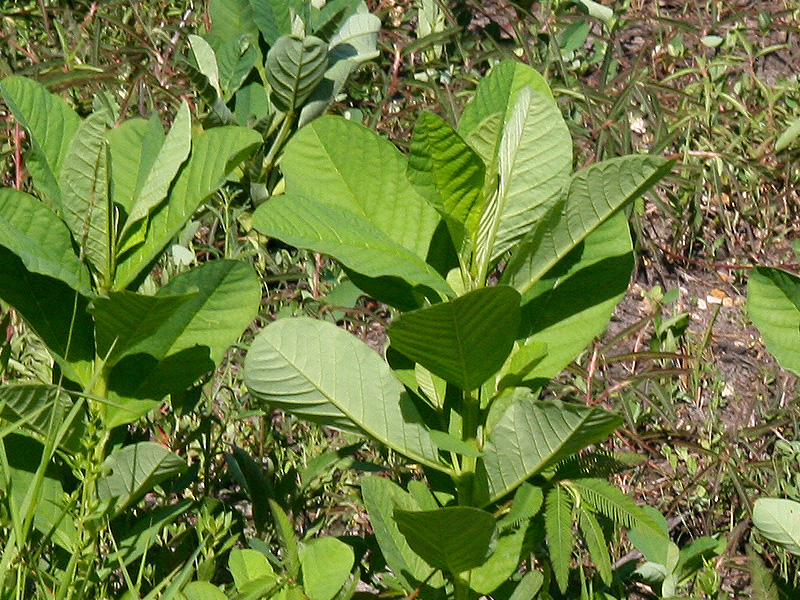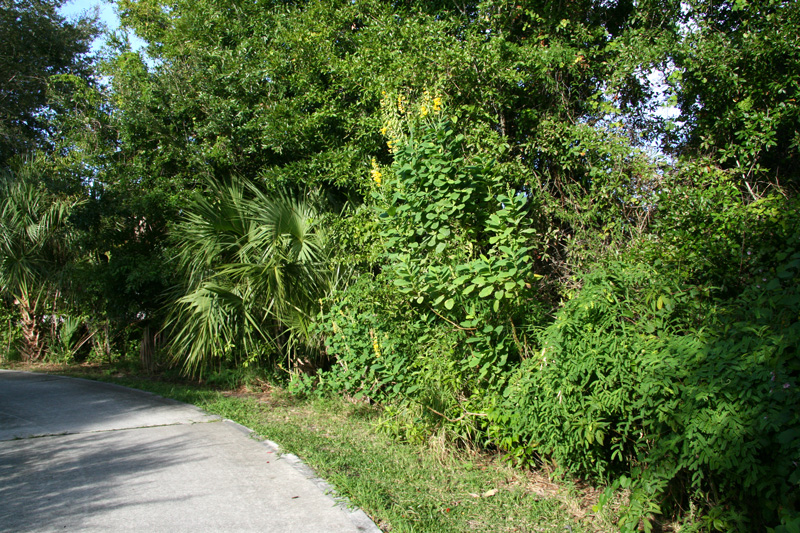
Showy rattlebox (Crotalaria spectablis) is big and beautiful, often growing to be more than six feet tall. Native to southeast Asia, this woody annual is weedy and poisonous. Rattleweed is another common name.
Showy ratttlebox loves disturbance, and the seedlings shown below on the Oslo Riverfront Conservation Area “link” property volunteered after the former citrus grove was cleared in 2008 …


Unlike the trifoliate leaves of the also often seen smooth rattlebox (Crotalaria pallida var. obovata), the leaves of showy rattlebox are simple (held singly), widest at the apex (top) of the leaf, and lighter in color on the undersides. Its leaves range from to two to six inches in size.
The leaves — and the seeds — are poisonous to some wildlife and livestock. Turkey, quail, and chickens are particularly sensitive to the toxic alkaloids in this plant. Horses, cattle, and pigs have been killed when they have consumed large amounts of this plant or small amounts over an extended period of time. Sheep, goats, and dogs tend to be less susceptible.
Its flowers are bright yellow and sometimes, but not always, have a few maroon markings at the center of the flower.

This plant blooms and seeds throughout the year.

The oblong pods (legumes) are inflated and ripen to be brownish black. The ends of the pods of smooth crotalaria turn upward.

As the pods mature, the seeds break loose and rattle when the pod is shaken. Each pod contains more than 20 black seeds, which can remain viable for up to 60 years in undisturbed soil. In 2009, a huge specimen grew on the west side of the ORCA parking lot driveway and may re-appear …

Bees and butterflies do visit its flowers, and crotalaria is the the larval host for the Ornate Bella Moth (Utetheisa ornatrix). Interesting, this native moth develops more quickly on native crotalaria species. This brightly colored moth gets toxic alkaloids from its host plant, and the alkaloid content tends to be higher in showy rattlebox than in the native species. The larvae often feed upon and destroy the seeds, a positive when it comes to weedy invasive plants. You are what you eat: native versus exotic Crotalaria species as host plants of the Ornate Bella Moth explores this curious co-evolution.
Is showy crotalaria a weed to an Ornate Bella moth?
